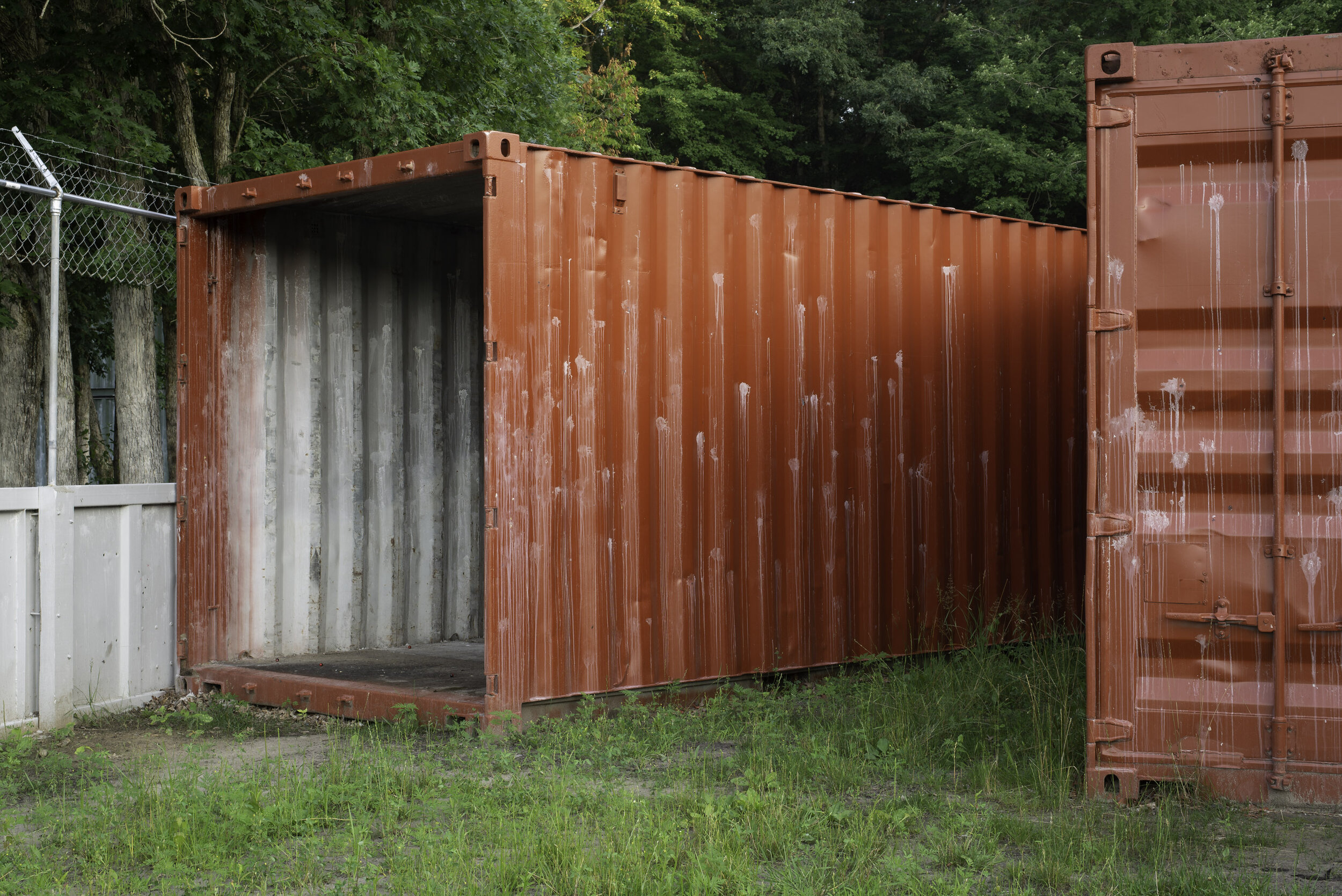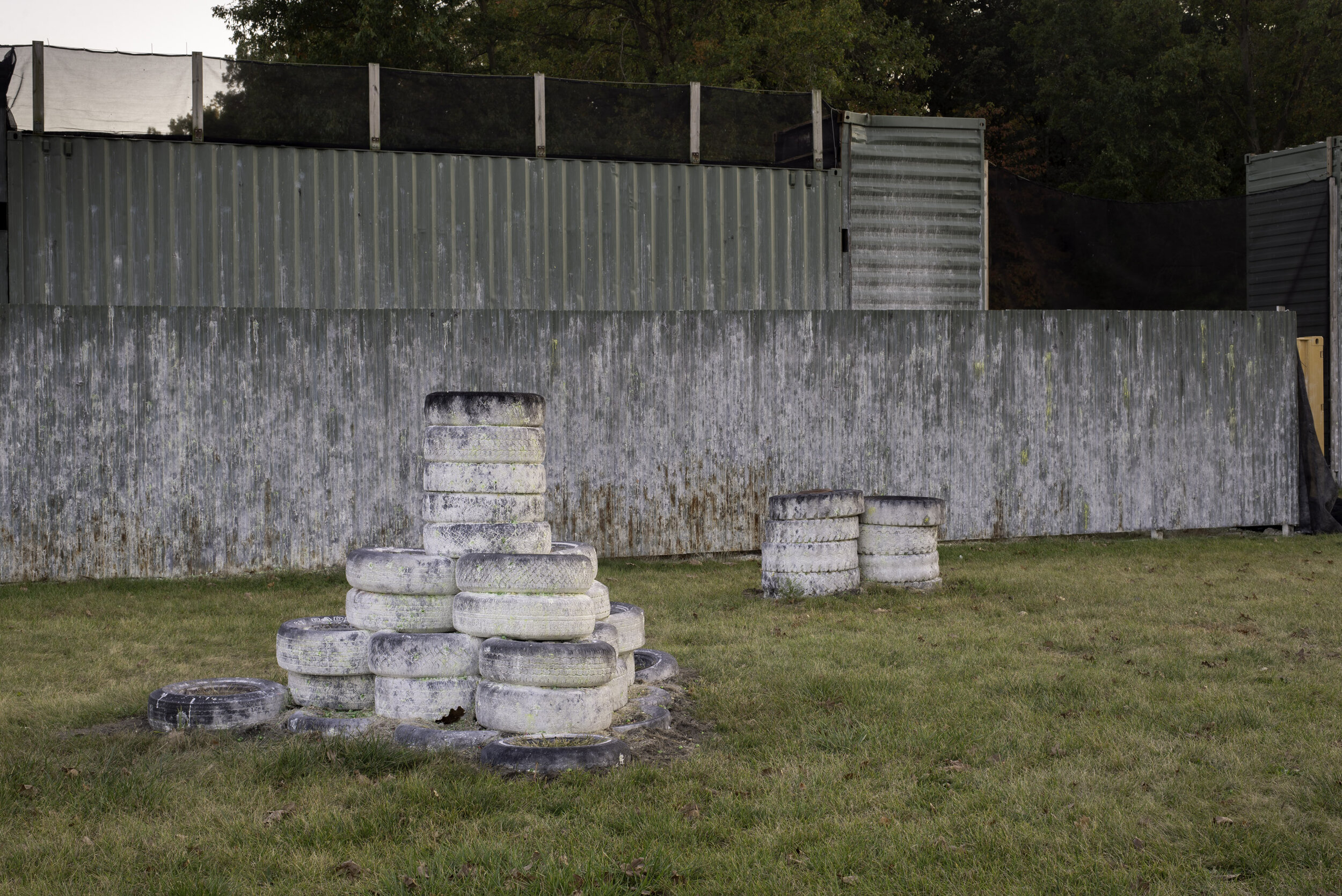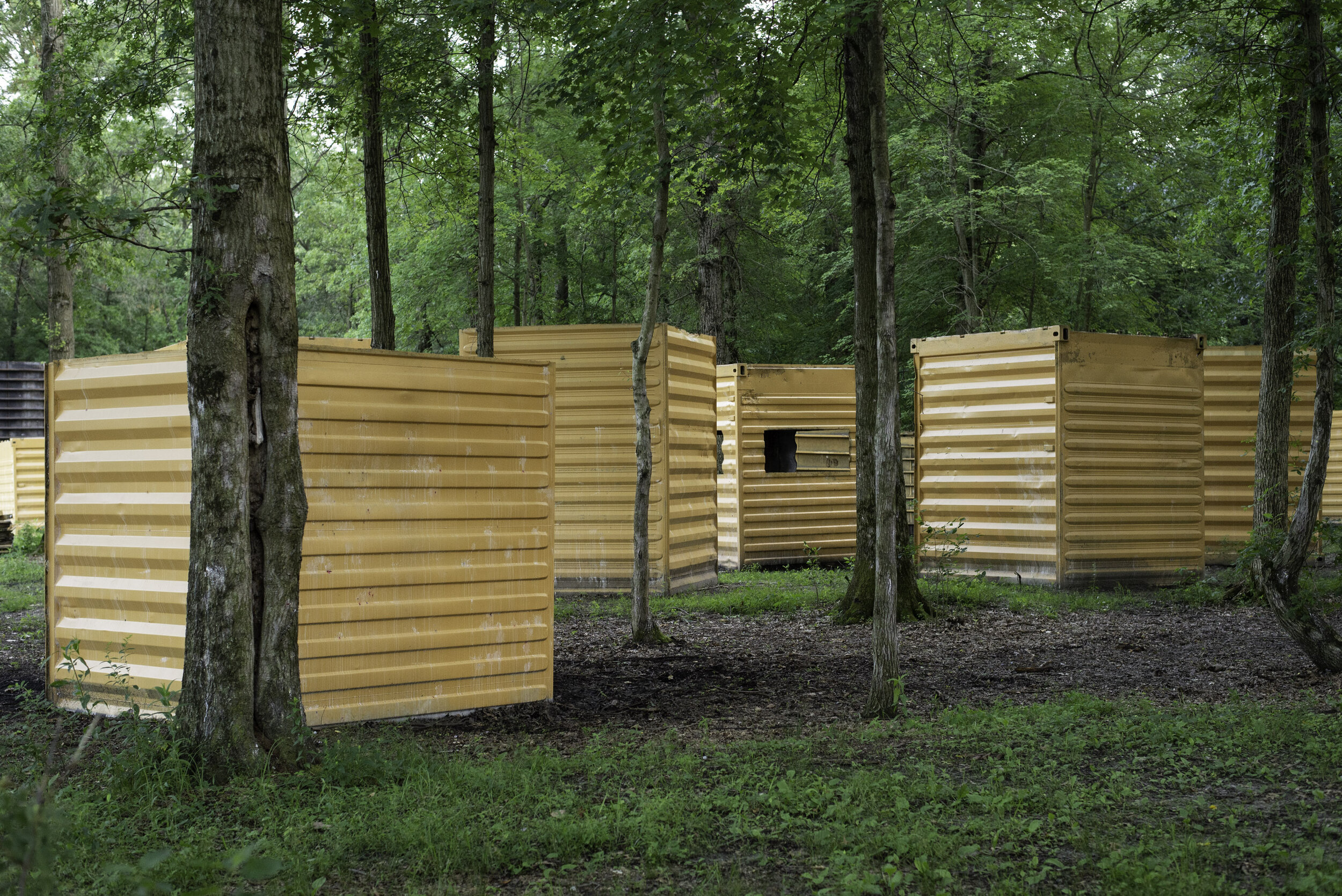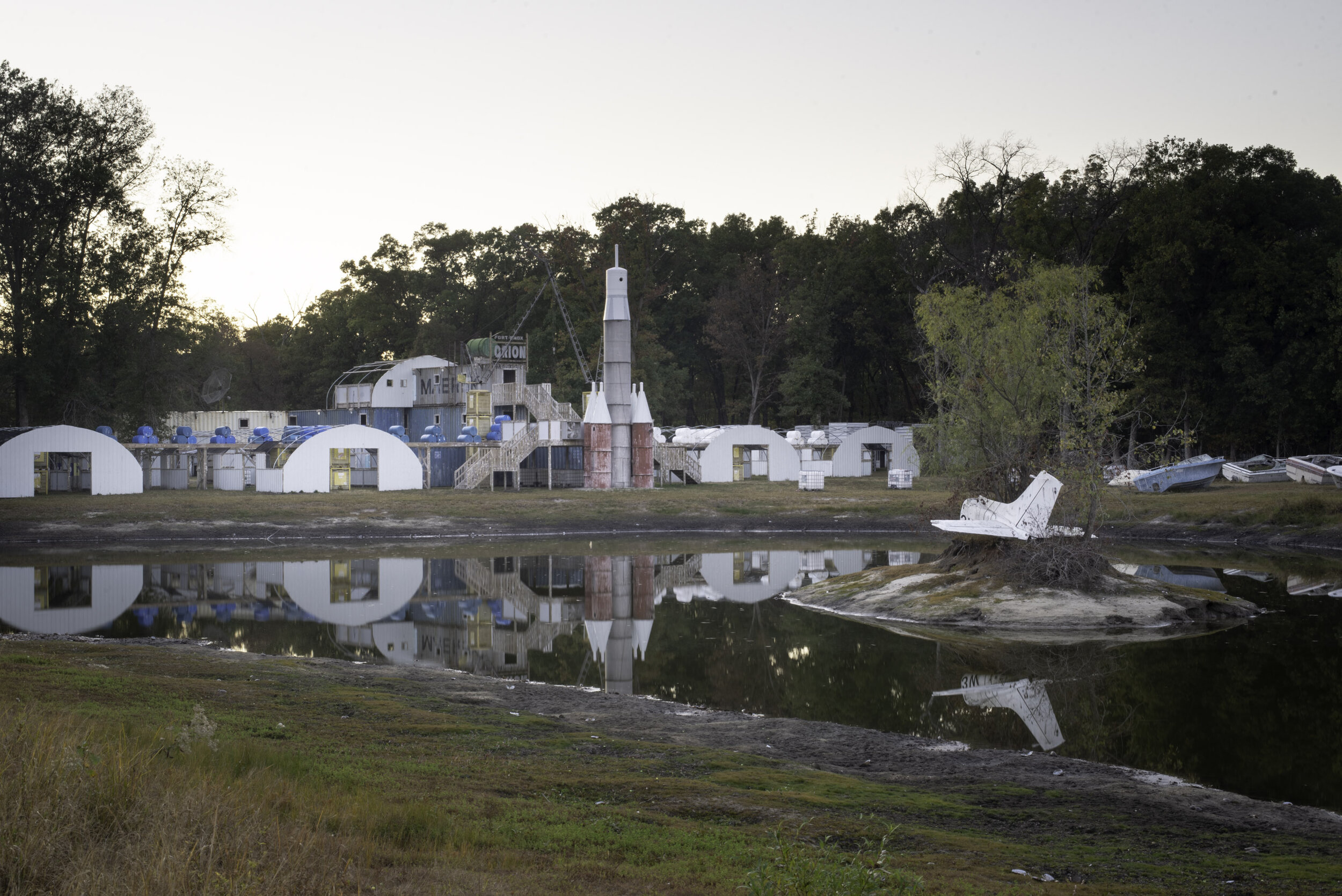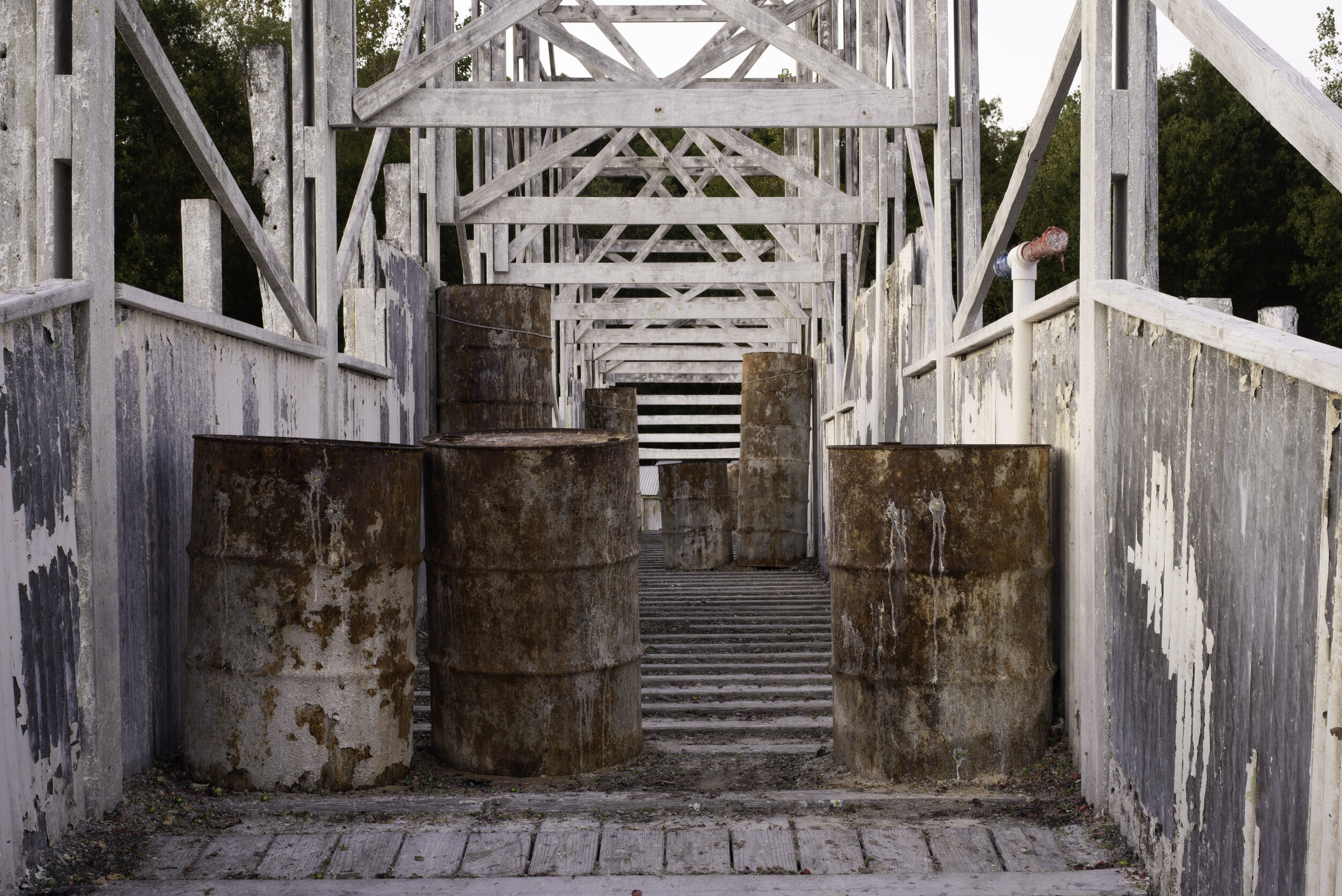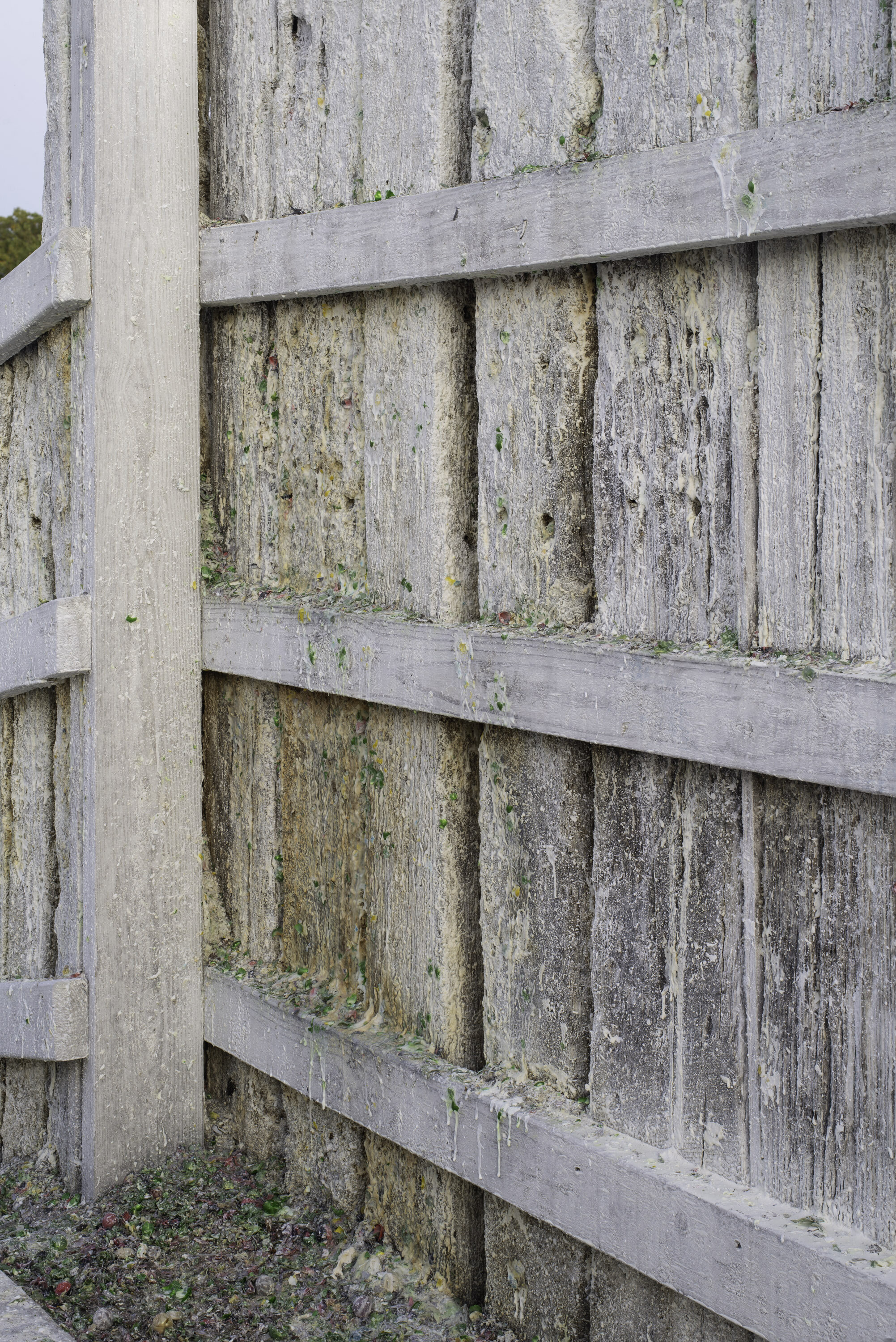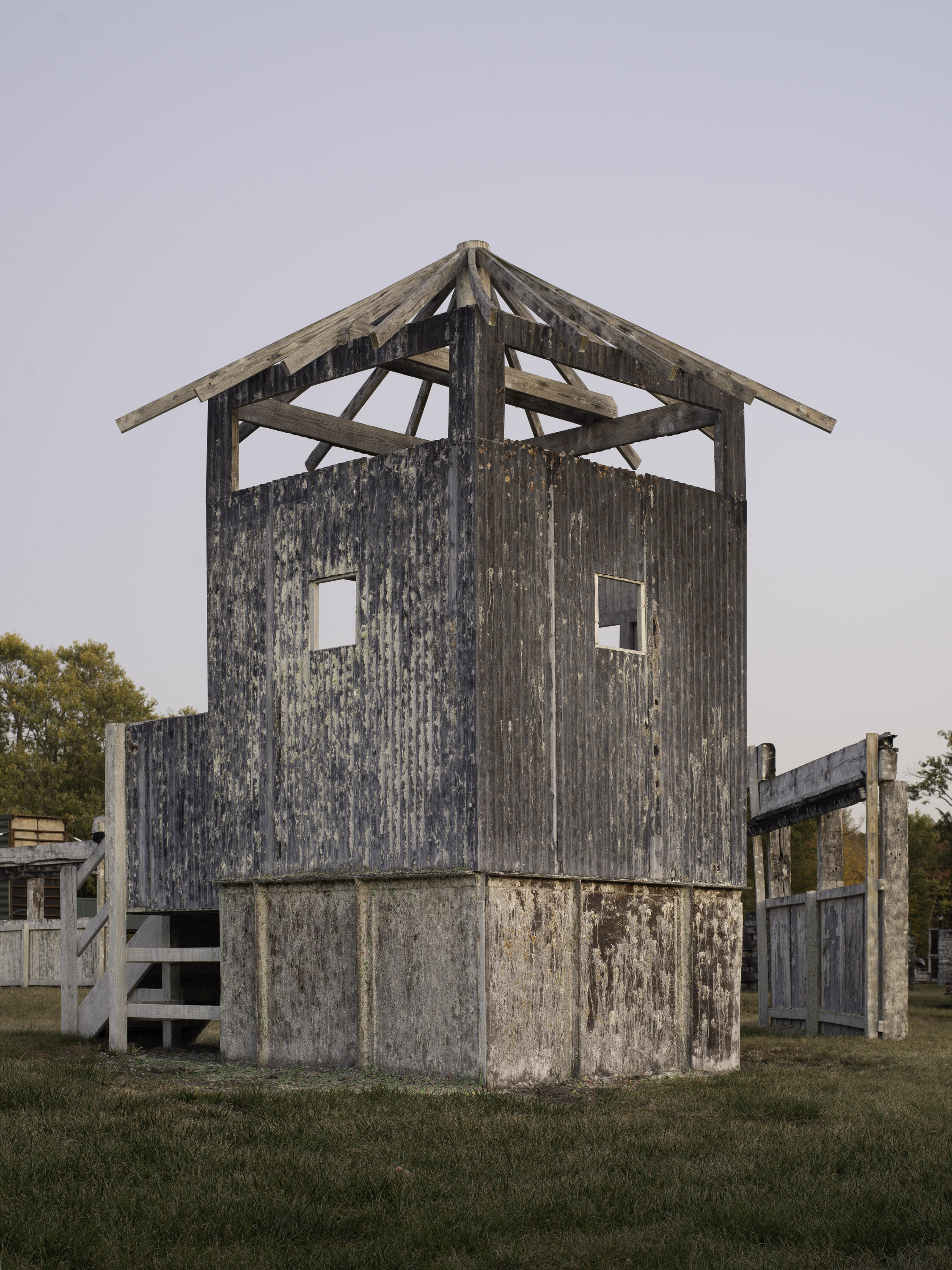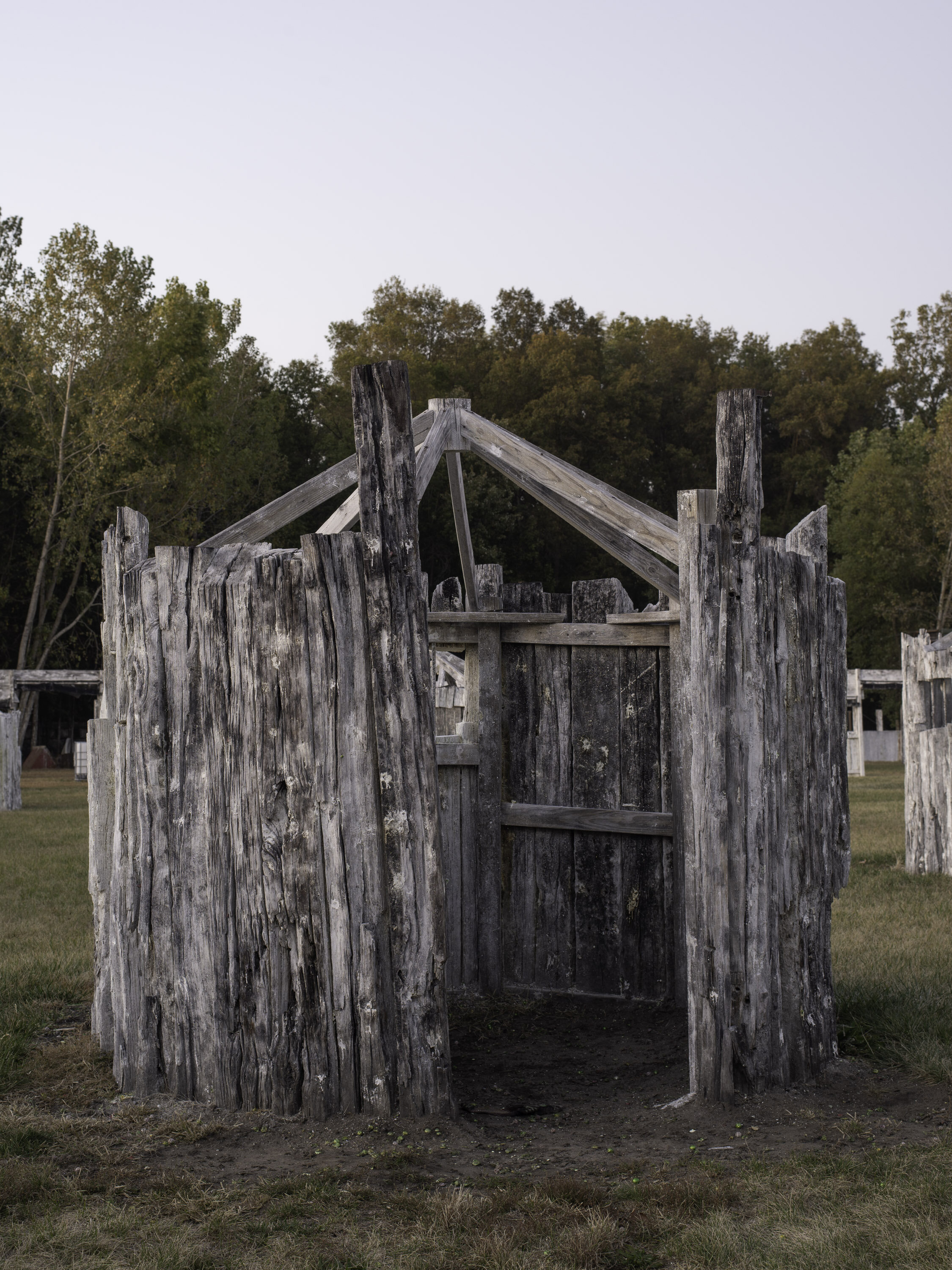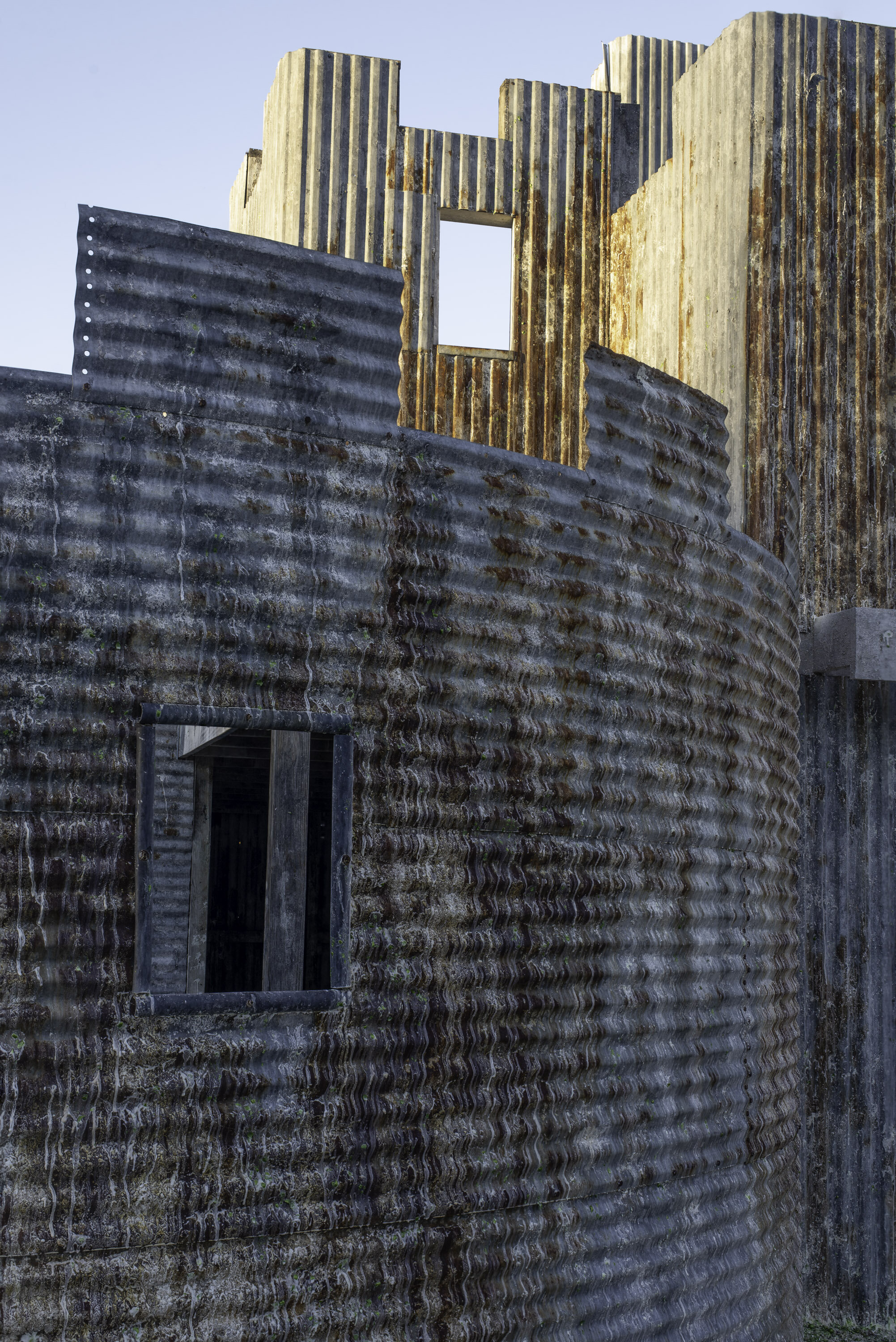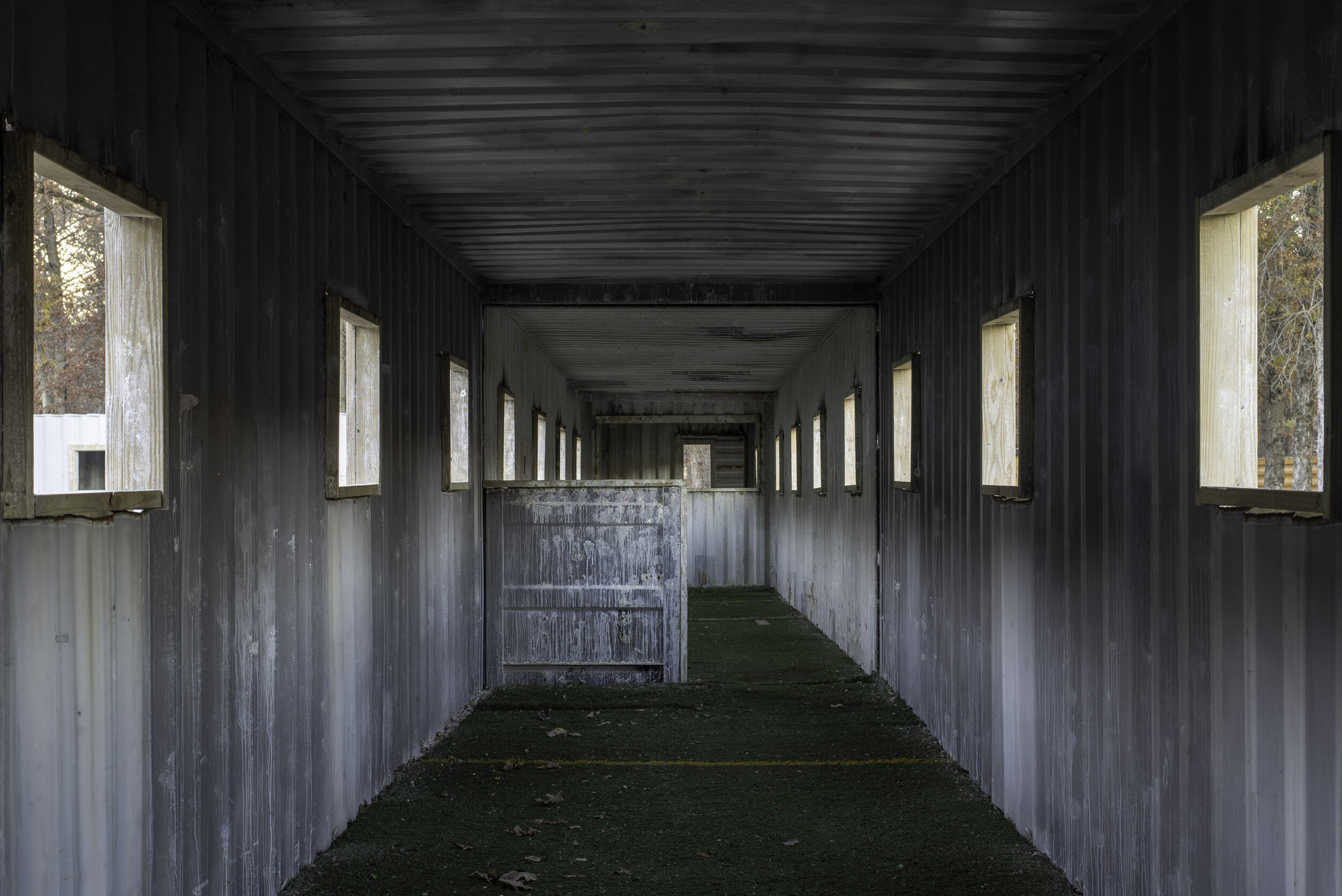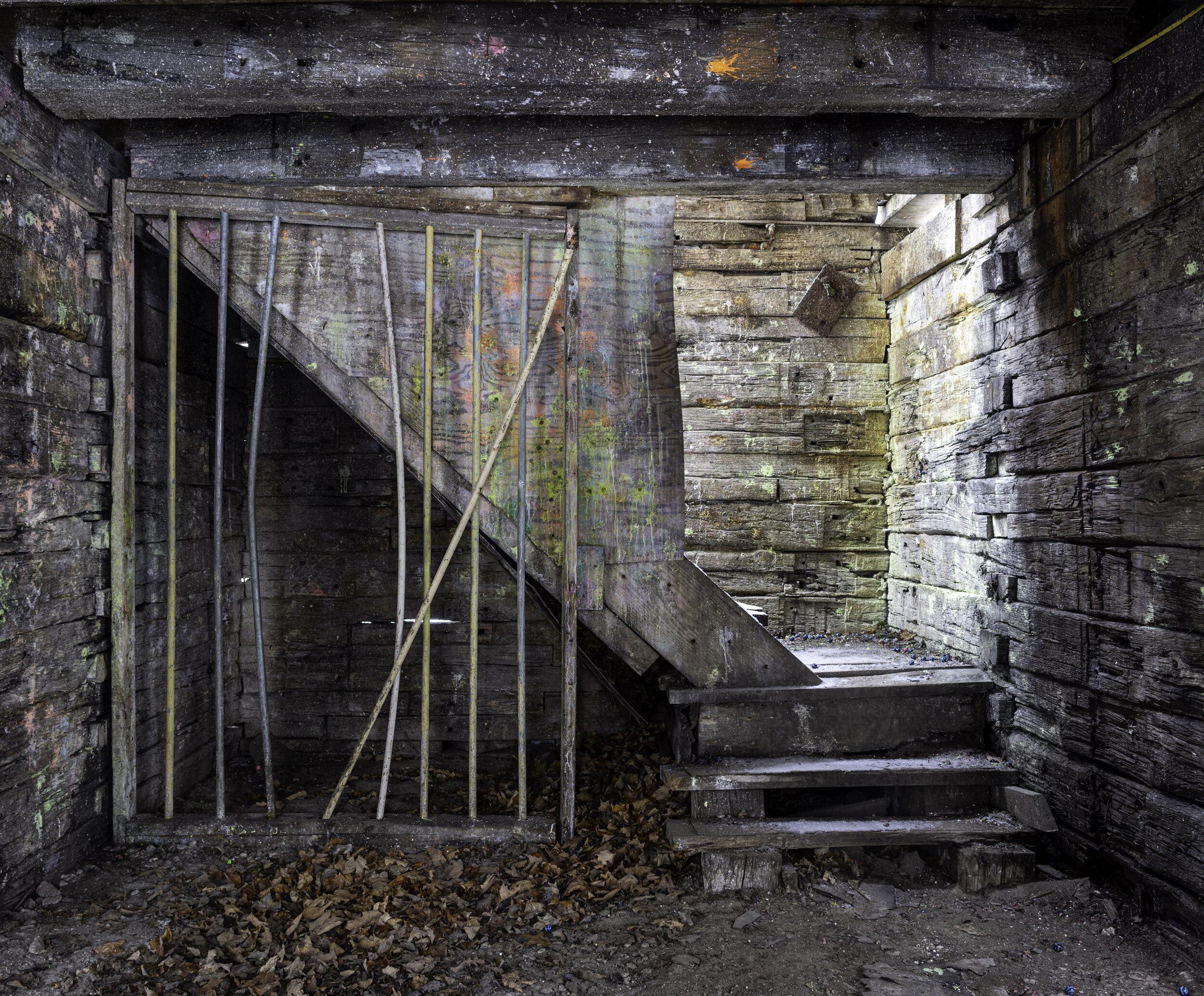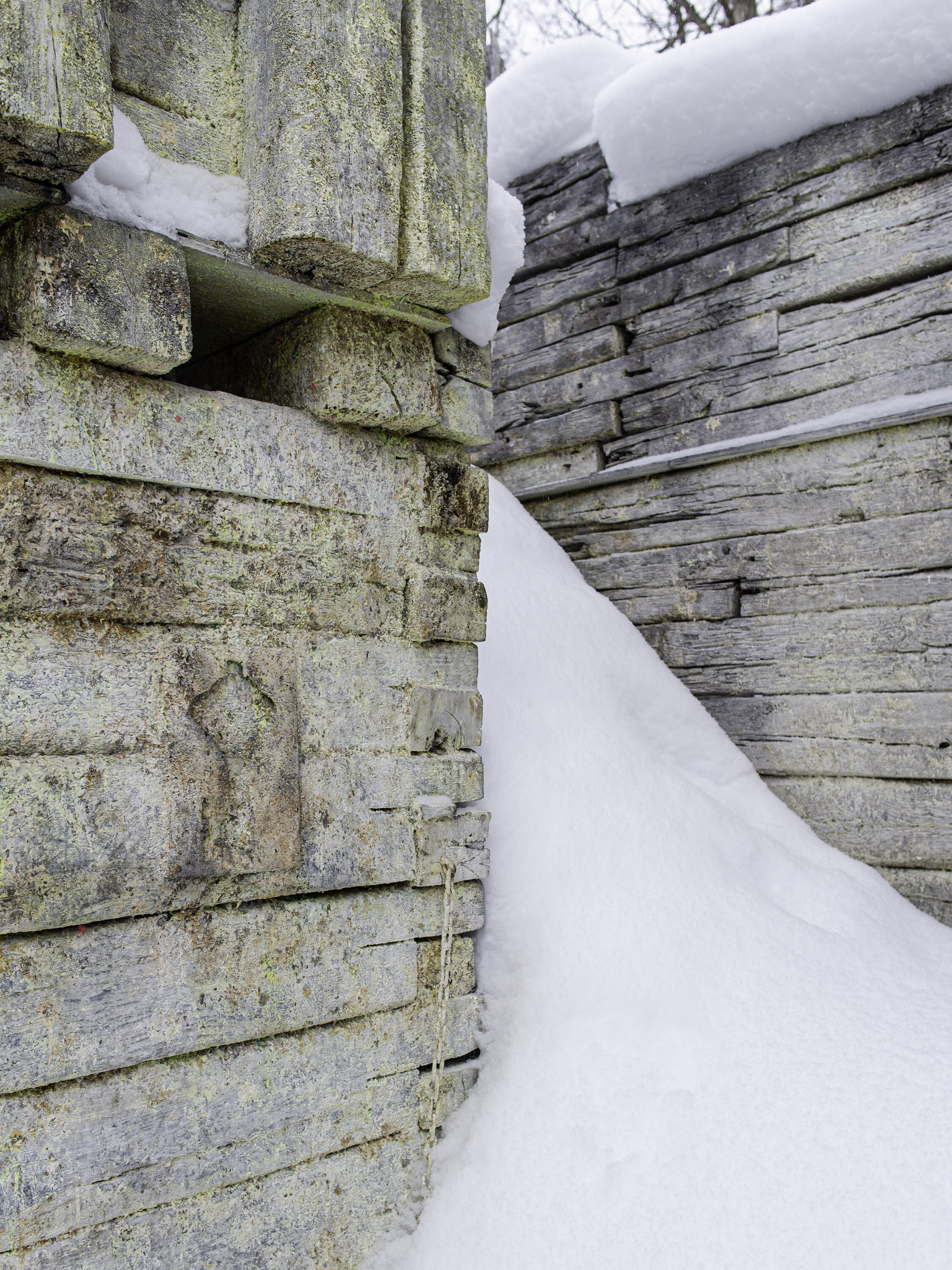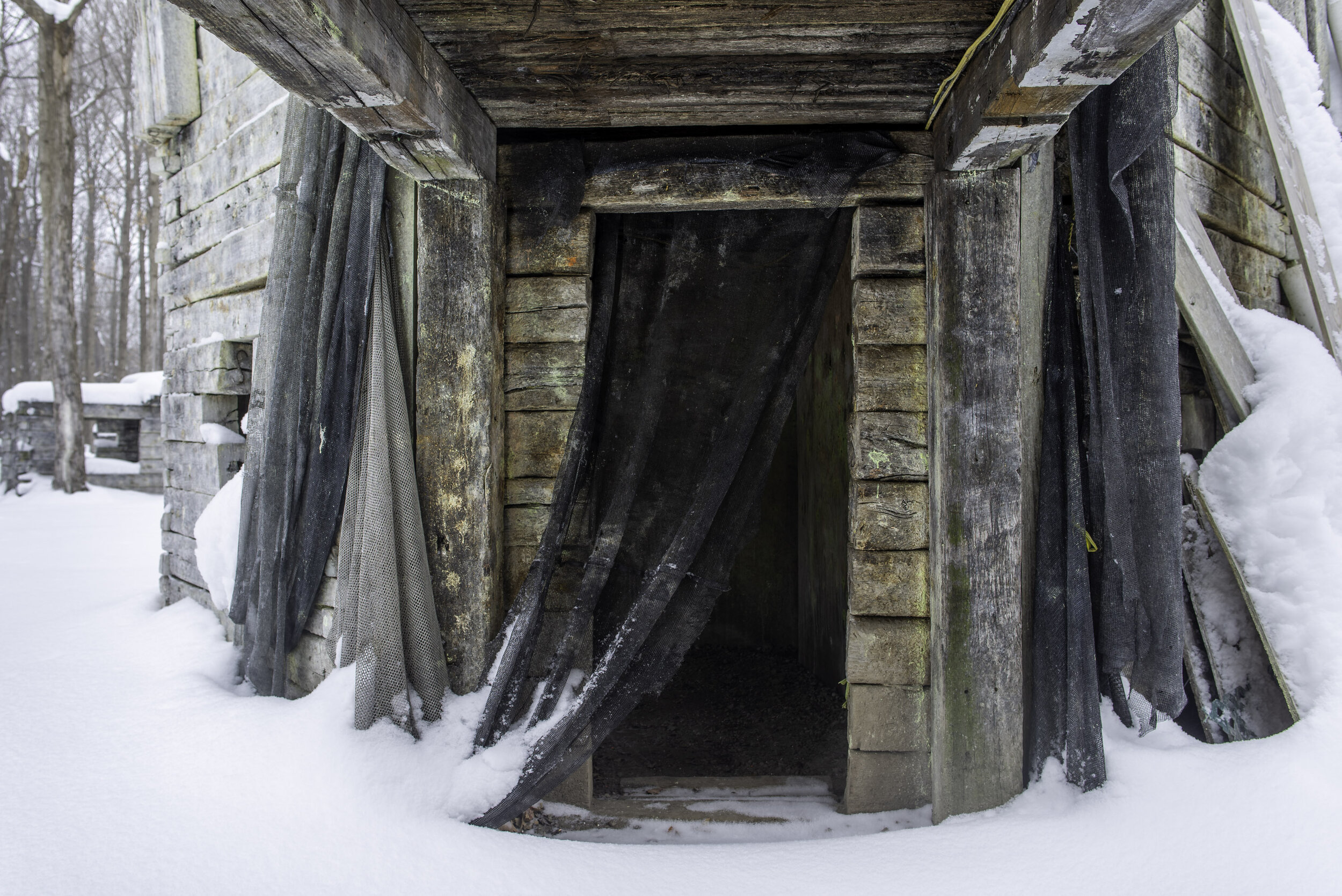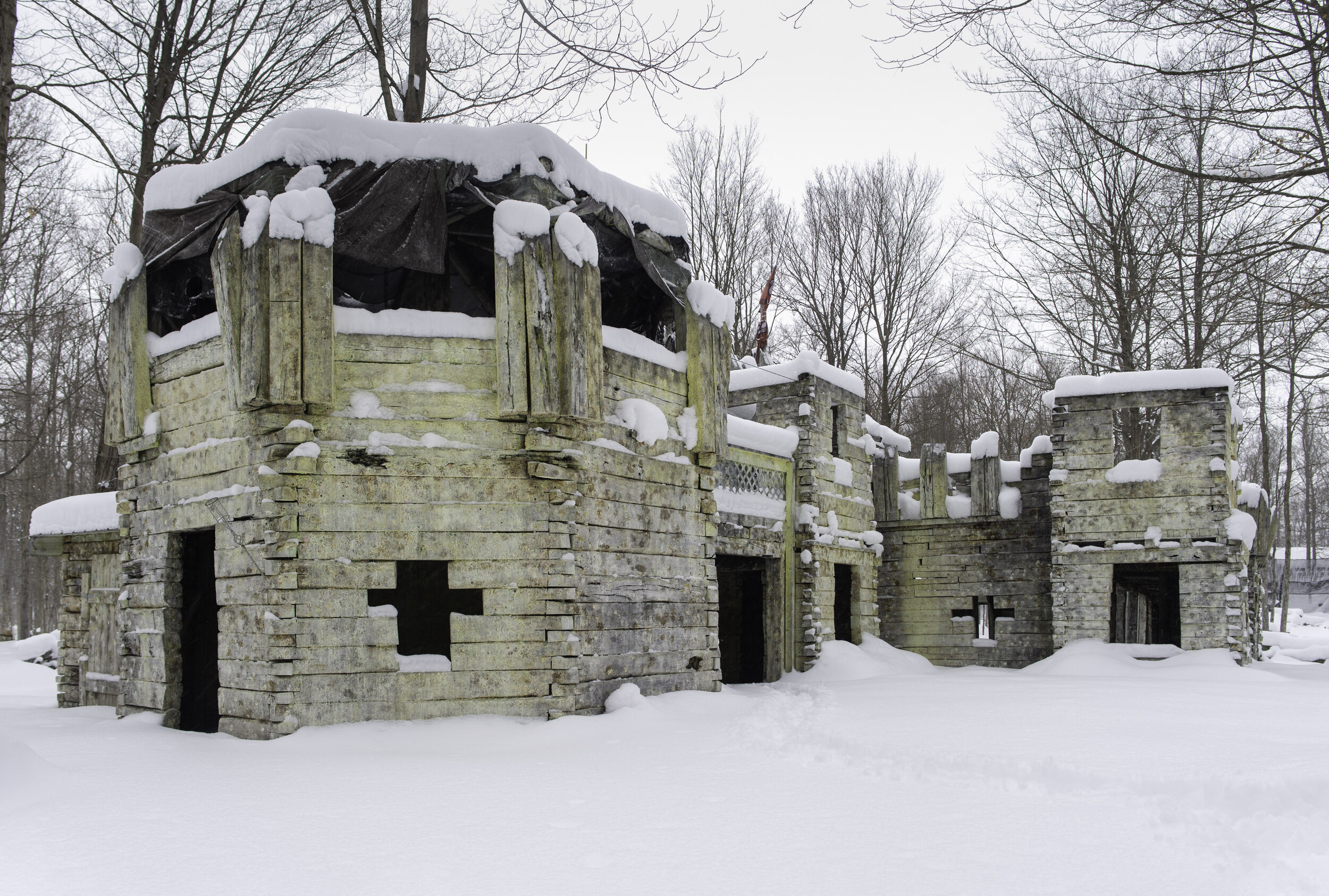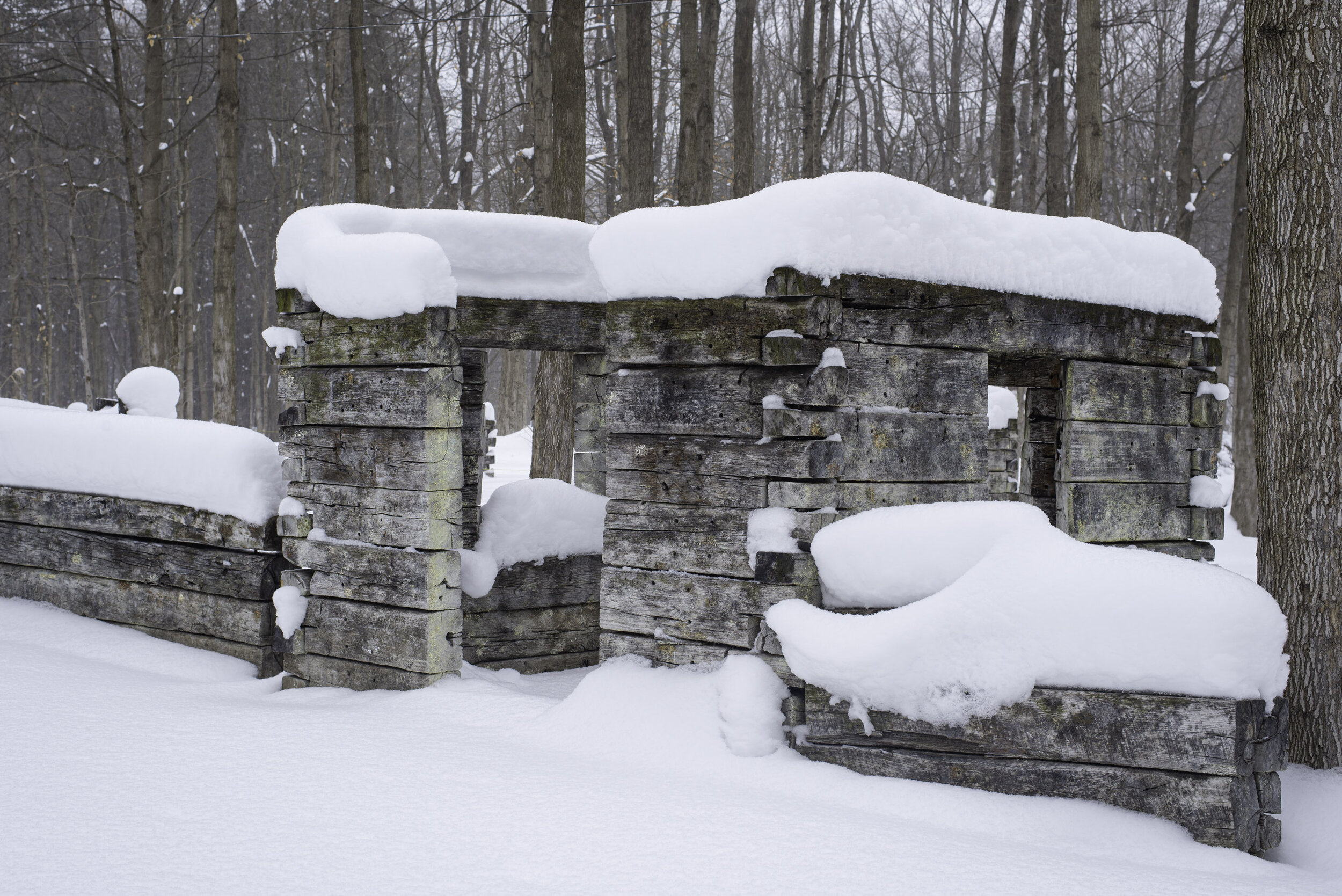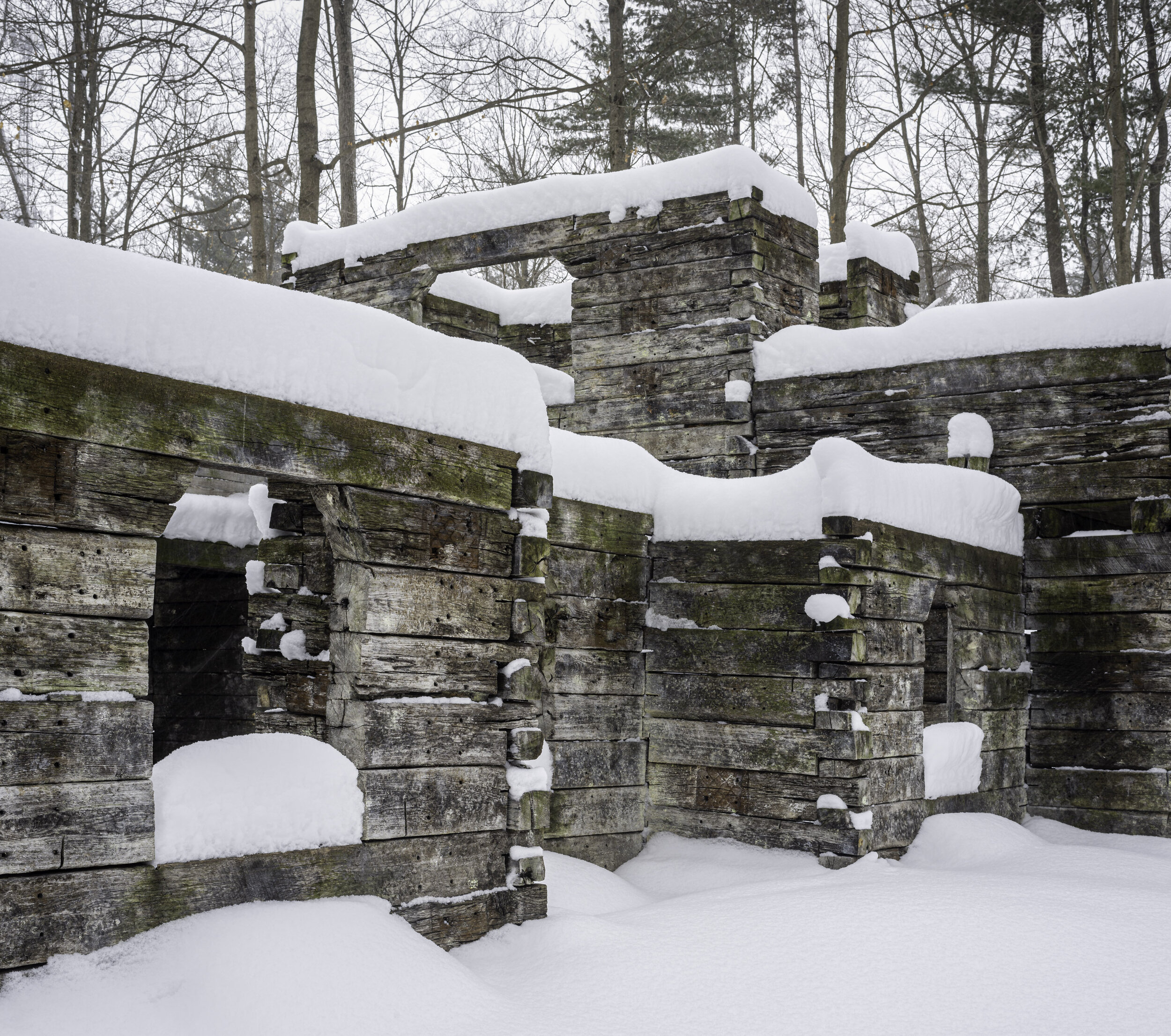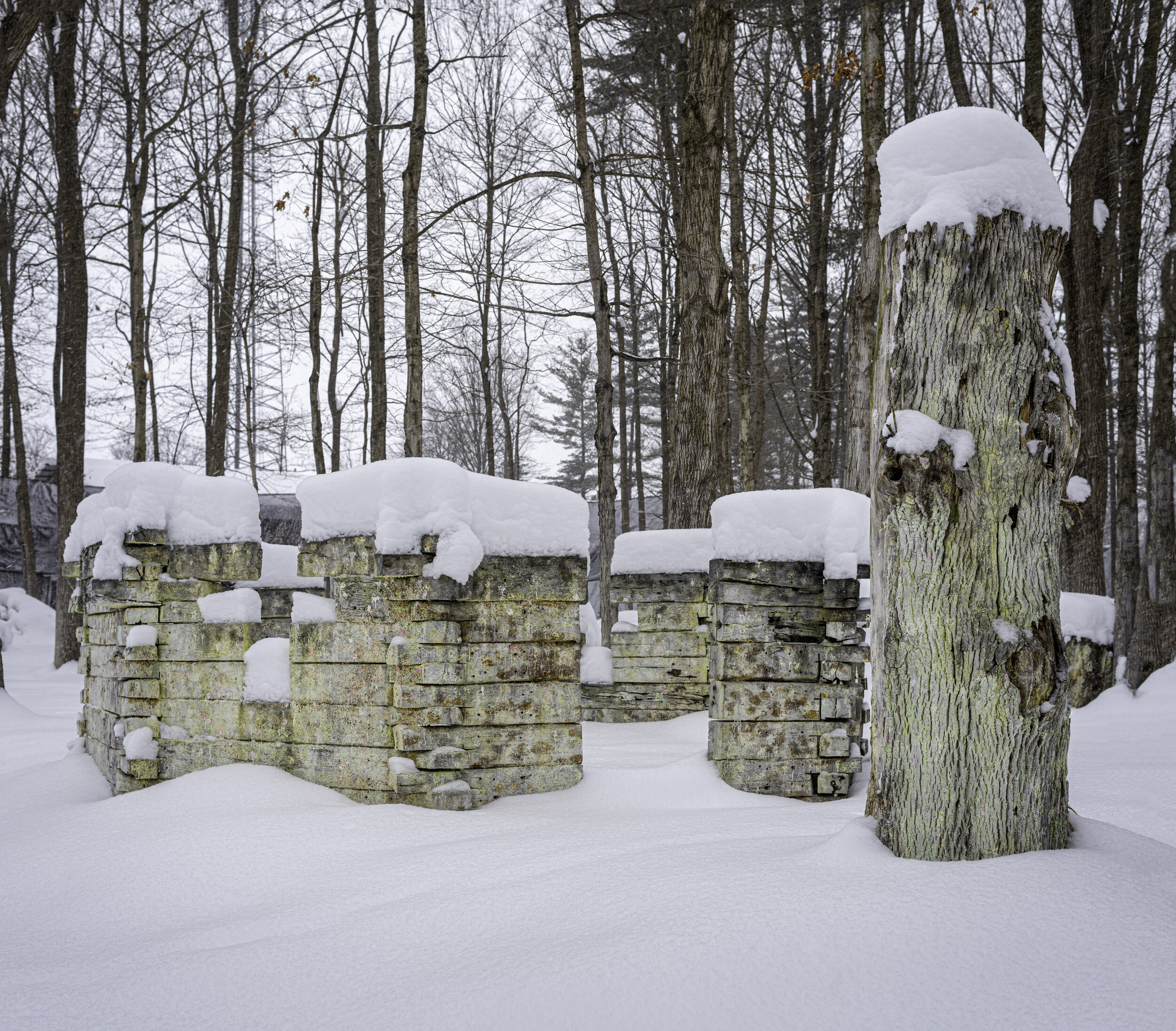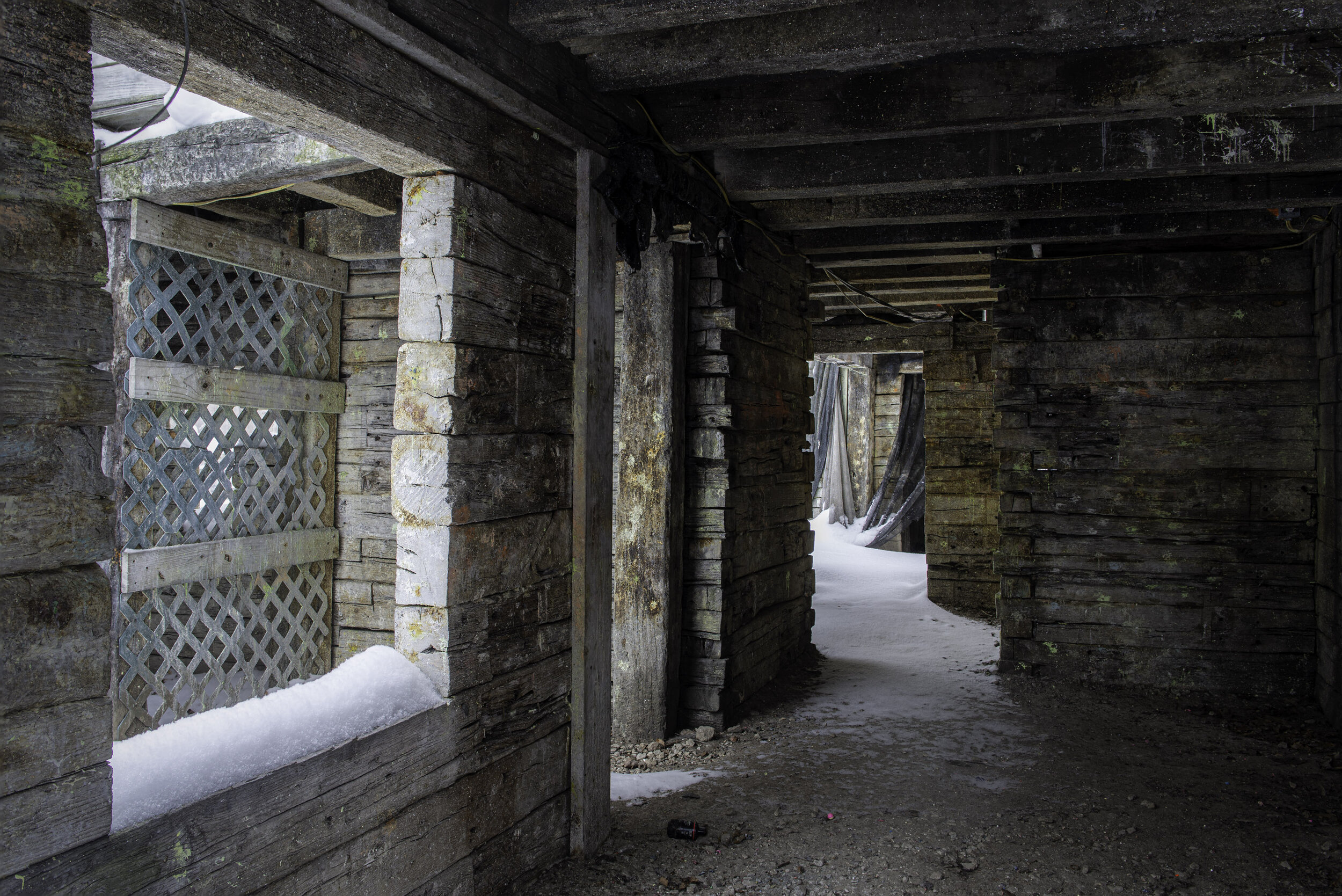As a photographer, I am drawn to places in which people have altered the landscape for recreation. Reworking the natural landscape due to population growth is a logical, if sometimes regrettable human practice. However, the displacement of earth for the aesthetic enjoyment of a group of people is a more deliberate and intentional practice, and it reveals more about the values of a culture. Paintball parks are an example of this activity. Like the makers of golf courses, gardens, and public parks, the makers of paintball parks reshape the landscape to achieve a specific aesthetic and physical experience. However, paintball is an activity that serves a much different subculture than than golfers and park visitors; a fact that is reflected in their design.
The design of paintball parks offer a unique insight into folk culture across the country. They are created to be set-pieces where exciting simulated combat takes place. The aesthetics of these sets show their cultural influences. Fields at paintball parks often reference historic battles, movies and television shows, and even video games (thus becoming a simulation of a simulation.)
The makers of paintball parks use the detritus of a consumer society to create their elaborate fields. Old, used-up shipping containers, cars, boats, highway signs, tires and barrels make up the structures and punctuate the open areas of the playing fields.
In our current era of globalization, it sometimes seems that all art is a part of popular culture. There is less region-specific art, and it is held to less esteem. Paintball parks fit into the old tradition of folk art. Although they bear the influence of popular culture, they are created mostly independently of large organizations, and reuse the refuse of modern society in their construction. They are a reflection of popular culture by outsider artists.
